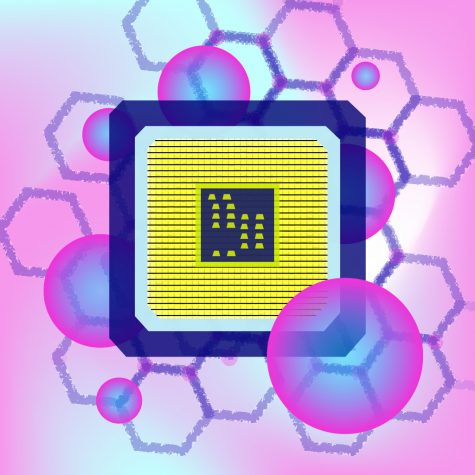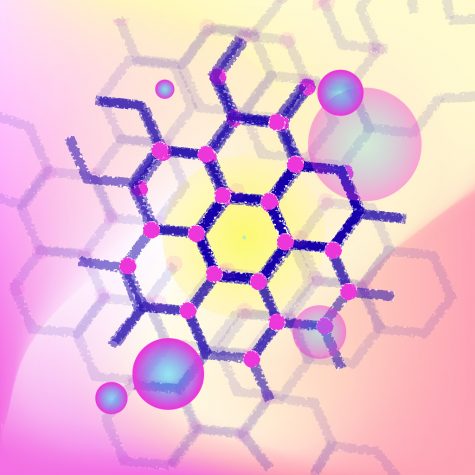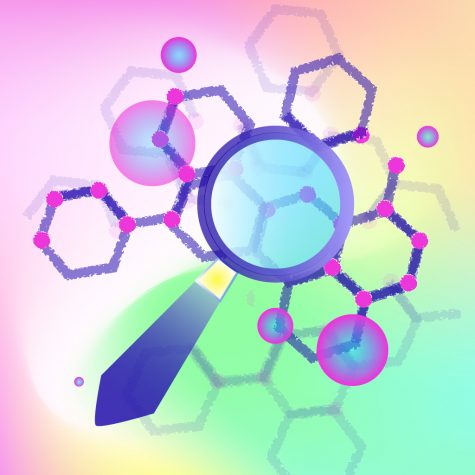Top New Tech: New products unveiled for upcoming year
September 20, 2019
The world of tech is an everlasting process where new innovations come about to replace the old ones. With 2019 being nearly over, scientists and companies are ready to unveil their new projects within the upcoming years. Computers have since evolved from the giant containers they used to be held in and so have their processors.
Computer Processors

According to Scientific American, by around 2020 a $1000 computer will have the capability to at least match the processing power of the human brain. Previously thought to be impossible, the machines will be able to express human intellect, emotions, and skills. To put in perspective, the human brain can process about one exa-flop, which is equal to about a quintillion calculations per second.
“It is really interesting because I did not know it was that advanced,” said senior Rohan Sonecha. “I did a project this summer that uses image classification that can detect and translate sign language into text. [Image classification] is at the higher end of what we can do right now, but if we can model human emotion and even more advanced functions of the brain, you can create full human assistants.”
The article in Scientific American states that once these computers achieve a certain level of intelligence and efficiency, their processing power will be equal to about 1,000 human brains.
Graphene
In recent years, scientists have been experimenting in the field of graphene and testing its possibilities. The substance is a very versatile material being very thin but durable. One of the many graphene conferences being held this year is in Incheon, Korea, in March 2020. Some of the many topics and discussions are about the growth and synthesis techniques, integration methods, modification and functionalization and chemistry and biology studies of graphene.

“Nanomaterial science is one of the most popular fields in research today because it offers such a wide variety of potential applications,” junior Betsy Tian said. “Graphene is an example of why nanomaterials hold such great potential.”
Once the production of cultivated graphene has been mastered, its possibilities are nearly endless. It can be implemented in almost everything from cell phone screens to chemical sensors to conductors of heat and electricity or the filters that have the ability to desalinate water by using holes the size of nanometers.
“Properties like high surface area and conductivity give it a lot of flexibility in design,” Betsy said.
Although graphene is one of the most studied materials and one of the most interesting, it can be quite dangerous at times. Graphene is millions of times smaller than paper and is considered as the first two-dimensional material, but, if ingested by accident, our body will struggle to filter out these thin particles which are deadly sharp and can easily tear cell membranes and as a result destroy the cell.
Graphene is a part of a complex system of nanoparticles and is considered the future of nanotechnology. With the ability to be practically two-dimensional, stronger than steel but still flexible, conduct heat and electricity extremely well, the applications of graphene will be endless in the future.
Nanotechnology
In the recent Avengers movie, Endgame, Iron Man’s new suit is made out of nanobots and is able to create whatever he wants. In reality, nanotechnology is not that advanced but has been making enormous steps in the field of biomedical sciences.
“ It is very useful in medical studies and studying individual cells and their conditions or possibly in the creation of smaller electronics,” said Arthur Jakobsson (11).
According to an article in ScienceDaily, scientists at Rice University have created a thermometer for cells. Varying temperatures can affect their effectivity and if conditions get too extreme, the cells can die. The nano thermometer uses light-emitting elements of certain molecules and changes based on temperature and viscosity of the environment around it.

“I believe nano tech is going to be really useful in the future especially for research in the sciences and later in the actual application,” said Arthur. “I don’t think there are any major downsides to developing nano tech.”
New research is being done to find out if nanotechnology can help with diseases like cancer. Currently the only solution is chemotherapy and because it is a nonspecific treatment, meaning it can’t be controlled or targeted to certain cells, it can damage the rest of the body and healthy cells. But by using nanotherapy for cancer, doctors will be able to deliver anticancer medications directly to the tumor without affecting the patient’s surrounding organs and cells.
In the future, nanotechnology will be used in many different ways, and maybe we will be able to create our own Iron Man suit.


















![“[Building nerf blasters] became this outlet of creativity for me that hasn't been matched by anything else. The process [of] making a build complete to your desire is such a painstakingly difficult process, but I've had to learn from [the skills needed from] soldering to proper painting. There's so many different options for everything, if you think about it, it exists. The best part is [that] if it doesn't exist, you can build it yourself," Ishaan Parate said.](https://harkeraquila.com/wp-content/uploads/2022/08/DSC_8149-900x604.jpg)




![“When I came into high school, I was ready to be a follower. But DECA was a game changer for me. It helped me overcome my fear of public speaking, and it's played such a major role in who I've become today. To be able to successfully lead a chapter of 150 students, an officer team and be one of the upperclassmen I once really admired is something I'm [really] proud of,” Anvitha Tummala ('21) said.](https://harkeraquila.com/wp-content/uploads/2021/07/Screen-Shot-2021-07-25-at-9.50.05-AM-900x594.png)







![“I think getting up in the morning and having a sense of purpose [is exciting]. I think without a certain amount of drive, life is kind of obsolete and mundane, and I think having that every single day is what makes each day unique and kind of makes life exciting,” Neymika Jain (12) said.](https://harkeraquila.com/wp-content/uploads/2017/06/Screen-Shot-2017-06-03-at-4.54.16-PM.png)








![“My slogan is ‘slow feet, don’t eat, and I’m hungry.’ You need to run fast to get where you are–you aren't going to get those championships if you aren't fast,” Angel Cervantes (12) said. “I want to do well in school on my tests and in track and win championships for my team. I live by that, [and] I can do that anywhere: in the classroom or on the field.”](https://harkeraquila.com/wp-content/uploads/2018/06/DSC5146-900x601.jpg)
![“[Volleyball has] taught me how to fall correctly, and another thing it taught is that you don’t have to be the best at something to be good at it. If you just hit the ball in a smart way, then it still scores points and you’re good at it. You could be a background player and still make a much bigger impact on the team than you would think,” Anya Gert (’20) said.](https://harkeraquila.com/wp-content/uploads/2020/06/AnnaGert_JinTuan_HoHPhotoEdited-600x900.jpeg)

![“I'm not nearly there yet, but [my confidence has] definitely been getting better since I was pretty shy and timid coming into Harker my freshman year. I know that there's a lot of people that are really confident in what they do, and I really admire them. Everyone's so driven and that has really pushed me to kind of try to find my own place in high school and be more confident,” Alyssa Huang (’20) said.](https://harkeraquila.com/wp-content/uploads/2020/06/AlyssaHuang_EmilyChen_HoHPhoto-900x749.jpeg)







